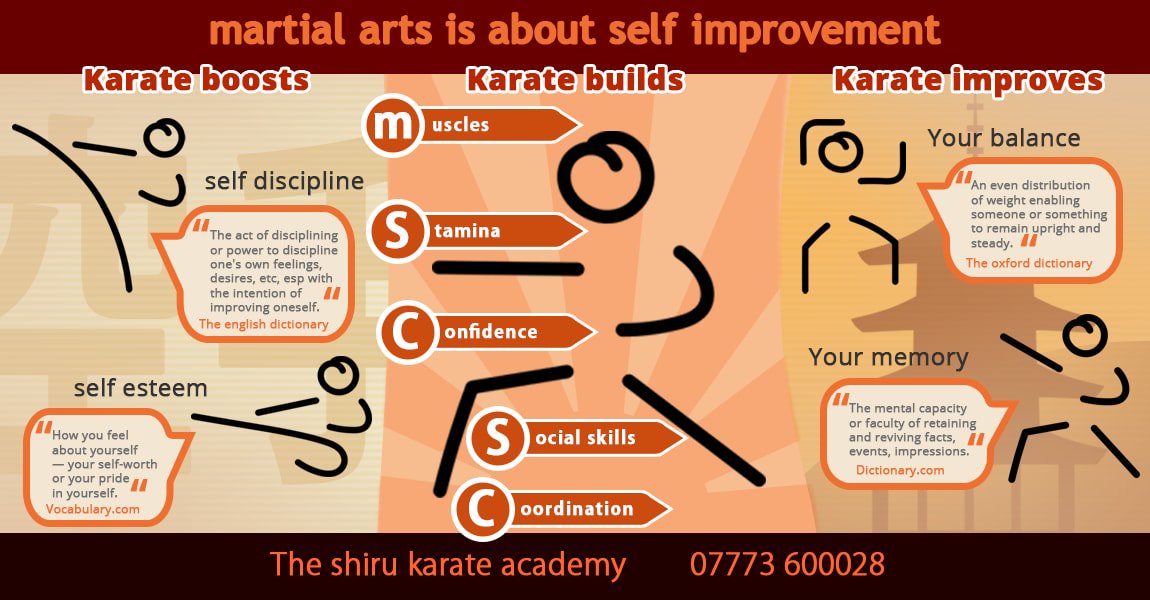The History And Development Of Martial Arts: From Ancient Beginnings To Modern Techniques
The History And Development Of Martial Arts: From Ancient Beginnings To Modern Techniques
Blog Article
Published By-Delaney Ross
Step into the globe of martial arts, where ancient beginnings and modern methods clash in an electrifying journey of discipline and self-discovery.
As you look into the history and development of this exciting art kind, prepare to be astounded by the cultural impacts, technical developments, and profound viewpoint that have actually formed it over centuries.
From the field of battles of ancient worlds to the training premises of today, martial arts have stood the test of time, constantly adjusting and growing.
Each strike, each motion, brings with it the weight of numerous years of tradition and wisdom, passed down via generations. This is a tale of resilience, of warriors who sought not only physical expertise, yet additionally inner strength and harmony.
Join us on this exceptional expedition as we reveal the secrets, the tales, and the transformational power of martial arts.
Prepare yourself to be influenced, challenged, and for life altered by the background and evolution of martial arts.
Cultural Influences on Martial Arts
As you discover the history and advancement of martial arts, you'll quickly discover the fascinating ways in which cultural impacts have formed these battle methods.
From the ancient human beings of China and India to the a lot more recent growths in Japan and Brazil, martial arts have been greatly affected by the cultures in which they originated.
For instance, Chinese martial arts, such as Kung Fu and Tai Chi, are deeply rooted in the ideology of Taoism and the idea of Yin and Yang.
In contrast, Japanese martial arts, like Martial arts and Judo, show the samurai warrior practices and the values of discipline and honor.
Similarly, read review fighting style, Capoeira, incorporates aspects of African dancing and songs, showing the cultural heritage of African slaves in Brazil.
These cultural influences not just provide each martial art its one-of-a-kind features yet also provide a much deeper understanding of the historical and social contexts in which they developed.
Technical Innovations and Martial Arts
With the rise of advanced weaponry and ingenious training devices, you have actually been able to improve your skills and adapt to the ever-changing fight landscape.
https://selfdefensemanvswoman18259.aboutyoublog.com/31253549/the-influence-of-martial-arts-on-developing-regard-and-empathy-in-children have actually changed the method martial arts are practiced and shown. Virtual reality simulations currently enable you to learn sensible fight situations without the risk of physical damage. High-speed cameras capture every move, enabling you to examine and ideal your strategies. Wearable devices check your heart price, breathing, and muscle activation, offering instantaneous feedback on your performance.
Furthermore, best martial arts for autism of customized devices, such as resistance bands and dexterity ladders, has actually allowed you to enhance your speed, strength, and agility. These technological innovations have not just made training more effective yet have also pressed the boundaries of what is feasible in martial arts, permitting you to get to brand-new heights in your method.
The Philosophy and Principles of Martial Arts
The viewpoint and concepts of martial arts are deeply rooted in shaping your attitude and instilling self-control, emphasis, and regard in your practice.
1. Way of thinking: Martial Arts teaches you to develop a strong and durable way of thinking. It enables you to get rid of obstacles both on and off the floor covering, pressing your limits and being determined when faced with misfortune.
2. Discipline: Martial Arts demands technique and self-discipline. Via routine training and adherence to rigorous regulations and methods, you learn to regulate your impulses and develop a solid job ethic.
3. Emphasis: Martial Arts requires intense emphasis and focus. By training your mind to be present in the minute, you boost your capability to react quickly and successfully during fight situations.
4. Regard: Martial Arts stresses respect for oneself, teachers, educating partners, and challengers. It educates you to value the abilities and experiences of others, fostering a sense of friendship and sportsmanship.
Conclusion
Congratulations on completing your trip with the captivating world of martial arts! Throughout this exploration, you have observed the rich background and impressive advancement of these combat methods.
From their ancient origins to the modern methods we see today, martial arts have been shaped by social impacts.
The assimilation of technology has actually likewise played a considerable duty in changing the way martial arts are taught and exercised in the present day.
Nonetheless, it is essential to remember that martial arts are greater than just physical fight. They incorporate profound viewpoints and guiding concepts that go beyond the simple act of fighting.
Take a moment to review this obsolete adventure and value just how the legacy of martial arts remains to prosper in the here and now, going beyond time and limits.
